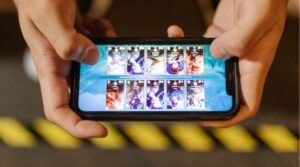Give yourself permission to be bored
Prior to the introduction of the Blackberry and Smartphone, when we stood in queues, waited for a friend at a cafe or travelled on a train, we’d spend time thinking, contemplating, reading, reflecting, planning…. MRI scans on people given tasks to complete and then given nothing to do, showed that there is a middle section of the brain that lights up when we are ‘bored’, when our brain isn’t engaged in activities like social media scrolling, gaming, reading news, doing work, analysing data, etc. *
This part of the brain is generally what is used when we are engaged in self-reflection. This is when we get to process emotions, the events of the day, the social engagements we’ve had, how these have affected us, how we’ve dealt with things, and how we intend to deal with them in the future. If we do not allow our brands this ‘wandering time’, we are unlikely to engage in these self-reflection practices.
What is fundamental about self-reflection, is that it is an essential ingredient in helping to reduce anxiety levels.
Another element around technology use during down-time, is that the all to familiar left – right analogy of how our brain works isn’t quite how creative thinking and analytical reasoning works. MRI imaging has shown that distinct areas of our brain (on both the right and the left side) light up when we are thinking creatively and a different areas of our brain (on both the right and the left side) light up when we are thinking analytically.
The interesting bit here is that the creative and analytical parts of our brain do not ‘light up’ at the same time. This means that as long as we are thinking analytically (or distracting ourselves with tasks or entertainment), the creative parts of our brain are dormant.
This is why we often get creative ideas when we are in the shower, just as we are falling asleep or just waking up – there is nothing else distracting our brain, so the analytical parts turn off, giving the creative parts the ability to switch on.
Why is this important? When we spend all our down-time distracting ourselves by staring at a screen, we are actively engaging the analytical parts of our brain. We are effectively silencing any creative or self-reflective thinking time. Being able to see things in new ways is an essential part of business innovation and personal change.
Without that, we tend spiral into stagnation. We copy others through lack of innovation. We produce the same results as everyone else – based on the same data and same analytics. We reduce our ability to be innovative.
So, what can we do about it? We need to actively give ourselves time in our day without phones, without technology, without distractions and just ‘be’. Give your brain room to slow down, to stretch, to explore. Give yourself the opportunity to be self-reflective, to be creative.
A few things you can try:
- Try to leave your phone behind when you go out on your own.
- Leave your phone in another room for the day.
- Don’t use your technology as a constant stream of entertainment and distraction.
- Give yourself a few hours before going to bed without any technology – have a pen and paper handy to write down any tasks, ideas of things to remember when they come into your head.
- Try to not look at your phone first thing when you wake up – give yourself at least half and hour before switching on any technology to process what you need to do for the day.
* If you want to know more about this you can read more about Ruth Lanius’s work on the ‘default state network (DSN)’ that Bressel Van Der Kolk refers to in his book ‘The Body Keeps the Score’ (see from page 106 of the Physical Book or Chapter 6 within the Audible Book).






